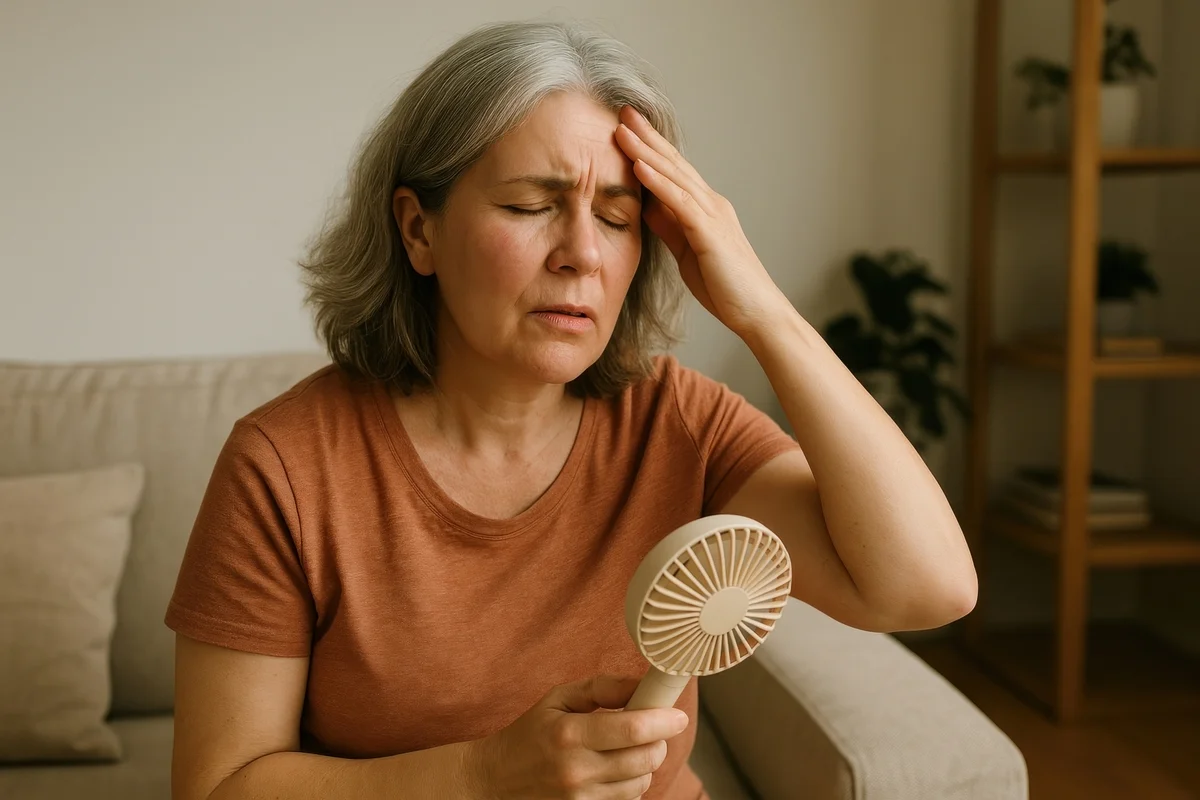What Is Bioidentical Hormone Replacement Therapy?
Bioidentical hormone replacement therapy is a modern approach to treating hormonal imbalances using hormones that are structurally identical to those produced naturally by the human body. This treatment option has gained significant attention as millions of adults experience age-related hormone decline, particularly during menopause and andropause, seeking alternatives to traditional synthetic hormone treatments.
Recent medical literature shows approximately 1-2.5 million women over 40 currently use some form of bioidentical hormone therapy, while major medical organizations have developed comprehensive guidelines for hormone replacement therapy. Understanding these safety profiles and appropriate candidate selection is essential for anyone considering hormone replacement therapy.
The landscape of hormone replacement therapy continues evolving, with 30+ years of research supporting bioidentical approaches while highlighting important considerations about treatment selection, monitoring protocols, and working effectively with healthcare providers to optimize outcomes.
Traditional hormone replacement therapy
Traditional hormone replacement therapy has long relied on synthetic hormones that mimic the function of naturally occurring hormones but differ in their molecular structure. The most commonly prescribed traditional hormones include conjugated equine estrogens (derived from pregnant mare urine) and synthetic progestins like medroxyprogesterone acetate.

These synthetic formulations were developed decades ago and became the standard approach for treating menopausal symptoms and preventing osteoporosis. However, their different molecular structure means the body processes them differently than natural hormones. Traditional HRT typically uses a "one-size-fits-all" approach with standardized dosing protocols that don't account for individual hormone level variations.
The 2002 Women's Health Initiative study significantly impacted traditional HRT use, revealing increased risks of breast cancer, blood clots, and stroke with certain synthetic hormone combinations. This landmark study led many women and healthcare providers to seek alternatives to hormone therapy, although it is important to note that these findings were specific to synthetic hormone combinations rather than all forms of hormone replacement.
Traditional HRT remains widely prescribed and can be effective for managing menopausal symptoms, but the standardized approach and synthetic molecular structures have prompted interest in more individualized, bioidentical alternatives that more closely match the body's natural hormone production.
Bioidentical hormone replacement therapy
Bioidentical hormone replacement therapy uses hormones that are chemically identical to those produced naturally in the human body. The key distinction lies in the molecular structure — bioidentical hormones match human hormones exactly, allowing the body to process them as if they were naturally produced.
Common bioidentical hormones include 17β-estradiol, progesterone, and testosterone, all molecularly identical to their human counterparts. These hormones can regulate menstrual cycles, maintain bone density, support muscle strength, influence energy levels, and affect sexual function. Thyroid hormones T3 and T4 are also frequently included in bioidentical protocols.
The fundamental principle behind BHRT is that identical molecular structure should result in fewer side effects and more natural hormone metabolism.

Is hormone replacement therapy safe?
The safety of hormone replacement therapy depends significantly on several factors: the specific type of hormones used, delivery method, individual patient risk factors, and quality of medical supervision.
FDA-approved bioidentical hormones have extensive safety data from clinical trials and post-market surveillance. These preparations undergo rigorous quality control, ensuring consistent potency, purity, and absorption. A 2022 systematic review of 29 randomized controlled trials involving over 1,800 women found that bioidentical hormones were not associated with adverse changes in lipid profiles, glucose metabolism, or endometrial thickness in short-term studies.
The safety profile varies by delivery method. Transdermal applications (patches, gels, creams) generally carry lower risks of blood clots compared to oral forms, while injectable pellets raise particular concerns due to the inability to remove them if adverse effects occur.
Individual risk factors significantly influence safety outcomes. For women seeking relief from menopause symptoms, patients within the "window of opportunity" (younger than age 60 or within 10 years of menopause onset) generally experience better safety profiles than older patients or those many years post-menopause.
The next page in our Bioidentical Hormone Replacement Therapy Hub has a more detailed description of the safety of hormone replacement therapy.
What are the risks of hormone replacement therapy?
Understanding BHRT risks requires distinguishing between well-established risks from long-term studies of traditional HRT and limited long-term data specifically for bioidentical preparations. Current research reveals both documented risks and areas where evidence remains insufficient.
Established risks associated with hormone replacement therapy include increased risk of blood clots, particularly with oral preparations of estrogen. The risk is significantly lower with transdermal delivery methods. Breast cancer risk remains a primary concern for HRT, although data specific to bioidentical hormones is limited compared to synthetic hormone studies.
Pellet therapy carries unique risks due to the inability to remove pellets once inserted. Studies show a 43% discontinuation rate after first pellet insertion, often due to supraphysiologic hormone levels causing adverse effects. The Endocrine Society specifically advises against pellet formulations due to these concerns.
Individual risk factors substantially influence overall risk profiles. Patients with personal or family history of breast cancer, previous blood clots, liver disease, or cardiovascular conditions face elevated risks that may outweigh potential benefits.
Hormone testing and monitoring
Hormone testing and monitoring protocols have evolved significantly based on recent evidence about testing accuracy and clinical utility. Major medical organizations now recommend symptom-based treatment over hormone level optimization, marking a substantial shift from earlier approaches.

Pre-treatment assessment should focus on a comprehensive health evaluation rather than hormone levels alone. Recommended baseline testing includes complete blood count, comprehensive metabolic panel, thyroid function tests, lipid profiles, and inflammatory markers. This approach identifies contraindications and establishes baseline health status.
Effective monitoring focuses on a comprehensive evaluation of the patient over solely relying on laboratory values. Monitoring protocols involves symptom assessment, physical examination findings, and adverse effect evaluation. Hormone levels from testing may guide treatment when necessary, but symptom relief remains the primary goal.
Follow-up schedules should include regular reassessment of treatment necessity, risk-benefit ratios, and development of any contraindications. Regular comprehensive evaluations help ensure continued appropriateness of hormone therapy while monitoring for long-term effects.
How do I know if I need hormone replacement therapy?
Determining candidacy for hormone replacement therapy requires careful evaluation of symptoms, risk factors, and individual health status. The decision should be based on moderate to severe symptoms affecting quality of life, combined with appropriate timing and absence of contraindications.
Classic symptoms suggesting potential hormone therapy candidacy include:
- persistent hot flashes
- night sweats
- sleep disturbances
- mood changes that significantly impact daily functioning
- irregular menstrual cycles
- vaginal dryness
- decreased sexual function
- decreased energy
- reduced muscle mass

Comprehensive symptom assessment should consider alternative causes. Depression, thyroid disorders, sleep apnea, and other medical conditions can mimic hormonal symptoms. Proper evaluation rules out these alternatives before considering hormone therapy.
When considering hormone replacement therapy for menopause symptoms, timing represents a critical factor in candidacy determination. The "window of opportunity" concept suggests optimal outcomes for women age 60 or younger, or within 10 years of menopause onset. Starting hormone therapy many years after menopause or at advanced age increases risks without proportional benefits.
Absolute contraindications eliminate hormone therapy candidacy regardless of symptoms. These include: unexplained vaginal bleeding, active breast or endometrial cancer, active blood clots, recent stroke or heart attack, and active liver disease. Personal or family history of breast cancer requires careful risk assessment.
Relative contraindications require individual risk-benefit analysis. Diabetes, high triglycerides, migraine with aura, and hypertension may influence treatment selection but don't automatically preclude hormone therapy. Alternative delivery methods may reduce risks in these situations.
Lifestyle factors and treatment expectations influence candidacy assessment. Patients seeking "natural" alternatives without medical indication may not be appropriate candidates. Those unable to commit to regular monitoring or with unrealistic expectations about treatment outcomes require additional counseling.
Quality of life impact provides the primary justification for hormone therapy. Mild symptoms that don't significantly affect daily functioning may not warrant hormone therapy risks. However, moderate to severe symptoms substantially impacting work, relationships, and overall well-being may justify treatment.
Working with your doctor
Effective collaboration with healthcare providers is essential for safe, successful hormone replacement therapy. The relationship should be built on shared decision-making, clear communication, and regular monitoring to optimize outcomes while minimizing risks.
Selecting an appropriate healthcare provider requires finding someone knowledgeable about current hormone therapy guidelines and evidence. Look for providers who discuss both benefits and risks, explain alternative treatment options, and don't rely heavily on unvalidated testing methods.

Initial consultations should include comprehensive health assessment beyond hormone-related symptoms. Providers should review personal and family medical history, current medications, lifestyle factors, and treatment goals. Expect discussion of contraindications, alternative treatments, and realistic expectations about outcomes and timelines.
Treatment monitoring should emphasize symptom response rather than achieving specific hormone levels. Providers focusing primarily on laboratory values may not be following current evidence-based guidelines. Effective monitoring includes regular symptom assessment, physical examinations, and evaluation for side effects.
Shared decision-making involves active patient participation in treatment selection. Providers should explain options, discuss your values and preferences, and involve you in choosing between different approaches. Document important discussions and decisions for future reference.
Regular follow-up appointments should reassess treatment necessity, effectiveness, and any developing concerns. Annual comprehensive evaluations should include breast health assessment, cardiovascular risk review, and consideration of treatment discontinuation. Providers should have clear protocols for managing adverse effects.
Red flag warning signs requiring immediate provider contact include unexplained vaginal bleeding, chest pain, leg pain or swelling, and severe mood changes. Providers should give clear instructions about when to seek urgent care.
Building an effective provider relationship requires honest communication about symptoms, concerns, and treatment response. Don't hesitate to ask questions about treatment rationale, seek clarification about conflicting information, or request second opinions for complex decisions.
Conclusion
Bioidentical hormone replacement therapy represents a significant advancement in treating hormonal imbalances, offering molecularly identical hormones that may provide more natural treatment options than traditional synthetic alternatives.
Successful hormone replacement therapy requires careful patient selection, appropriate timing, and ongoing medical supervision focused on symptom relief rather than hormone level optimization. The evolving understanding of BHRT safety and efficacy continues to refine treatment approaches, emphasizing individualized care within evidence-based guidelines.

Working with knowledgeable healthcare providers who understand current guidelines and maintain focus on patient safety ensures the best possible outcomes for those considering bioidentical hormone replacement therapy.
If you want to learn more about bioidentical hormone replacement therapy treatment options, schedule a free consultation so we can talk about appropriate lab testing and follow-up to restore your hormones to optimal levels to look and feel your absolute best.
